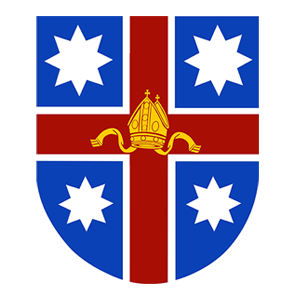Page contents
A guide to the Directory
Online
The online edition of The Anglican Church of Australia Directory replicates the data in the print edition but has the added advantage of regular updates.
The online edition allows for a free trial and also offers a discounted subscription rate for larger parishes, Dioceses and organisations. See the Subscribe Now tab.
Entries can be updated on an ongoing basis by completing the online form under the ‘Update your listing’ tab. Please note that changes may not be uploaded immediately as there is a verification process involving Diocesan offices and cross checking with our database.
Suggestions for improvements are always welcome.
Introduction
This guide explains how detailed information contained in The Anglican Church of Australia Directory is arranged.
Navigation
The Directory is divided into distinct categories, each with clearly labelled page headers and navigation tabs.
Sorting order
Most lists are sorted in alphabetical order. Spaces are sorted before punctuation marks etc. so ‘Toorak Gardens’ appears before ‘Toorak,’. In the clergy section names are sorted by surname, then given name(s), regardless of title.
Dioceses
The Directory includes some general information about the basic units of this Church, its dioceses. For each diocese details of the bishop and main office holders and contact details are given, with lists of that diocese’s parishes, churches and clergy. At the end of the diocesan section is some information about Australian Defence Force (DF) chaplains who minister under primatial licences. Many, but not necessarily all, DF chaplains also have an ATO or PTO for the diocese where their primary ministry is located.
Dioceses have adopted various approaches to the organisation of their parish-type ministry units. Areas overseen by assistant bishops are variously labelled areas of episcopal oversight, episcopates and regions.
Other areas labelled as archdeaconries, deaneries, ministry mission regions, mission areas, mission networks and regions are led by archdeacons, area, regional or rural deans and mission area leaders.
Overall there are three dioceses with a three level structure, seven with two levels, and nine with a single level. Four of the rural dioceses have no formal structures in place – Ballarat, Rockhampton, The Murray, and The Northern Territory. There are some twelve different schema when the various labels for areas of oversight and their leaders are taken into account.
The structural arrangements are shown for each diocese, with the names of the leaders of each area and the parishes within it.
The diocesan clergy are listed in three parts:
- The names of those who hold a licence or an authority (ATO) or permission (PTO) to officiate and are based in the diocese are listed.
- Defence Force chaplains and clergy whose primary ministry or residence is in another diocese but have an ATO or PTO or other role in the diocese are listed.
- For some dioceses, clergy who do not hold a full licence or ATO/PTO but are formally recognised in some way by the diocese and whose details can be found in the clergy details section.

Churches, parishes and their clergy
Churches and parishes are sorted alphabetically by locality or parish name where that is not a geographic locality. Where the parish locality is the same as that of its principal church, the church address, parish contact details, and parish clergy are listed under that locality.
Parish name/location different from church name
If the parish name is different from the locality of the principal church (e.g. in Western Australia the Parish of The Goldfields has its main church in Kalgoorlie) the parish contact details and clergy are listed under the parish name.
Subsidiary churches and worship centres
Subsidiary churches and worship centres have their address and a cross reference to the parish name. The diocese for each church and parish is given at the top right of each entry. Parish website addresses have been verified during 2020.
Display of parish leadership
Where the appointment of the leader of the parish has changed (e.g. from Priest in Charge to Rector), only the most recent appointment will be shown in the parish listing – see the clergy entries for full details.

Clergy details
Clergy are listed in alphabetical order of surname with information about their ordination and ecclesial positions held. Locums during interregnums are listed where the period is known, but these are incomplete. Contact details, qualifications, and birth year are shown where the cleric has authorised their publication.
Descriptions for offices (and therefore their abbreviations) generally follow diocesan usage. What one diocese describes as an Assistant Deacon (AsstD) may be described by another as a Deacon Assisting (DAsstg), a Parish Deacon (PD), or an Assistant Curate (AsstC).
Similarly parish leaders are variously described as Incumbent (I), Curate, Deacon or Priest in Charge (CiC, DiC, PiC), Rector (R), Senior Minister (SnrM) or Vicar (V). Many of the abbreviations used are well known, but refer to the list of abbreviations and acronyms on page 577 for further explanation. Most office abbreviations reflect the licence issued by the bishop, but in some cases local usage expands on this. For example an assistant cleric may be licensed as an Assistant Minister (AsstM) or Assistant Priest (AsstP), but be locally known as an Assistant Minister for Families (AsstM(Fam)) or Assistant Priest for Youth (AssstP(Yth)). The use of the term ‘associate’ is often a matter of local usage rather than reflecting a formal authorisation, licence, or permission. Particularly for retired clergy it is common for them to have a diocesan ATO or PTO but to be known locally as an Associate Minister (AssocM) or Priest (AssocP).
While we have some information in relation to whether appointments are part-time or full-time, honorary or non-stipendiary or stipendiary this has not been verified and so has mainly been withheld from publication in this edition.

